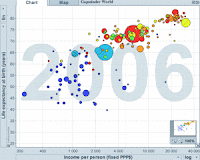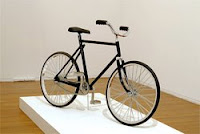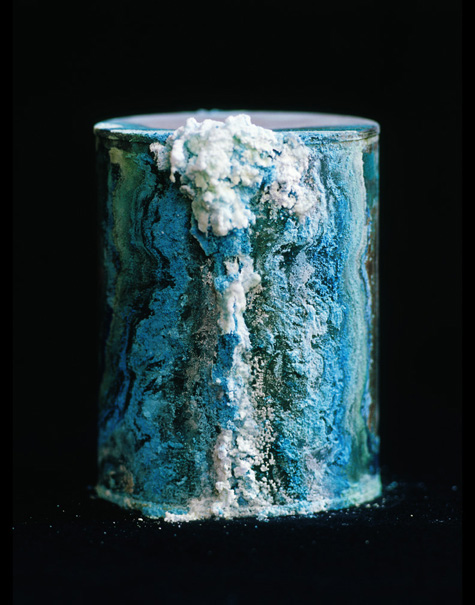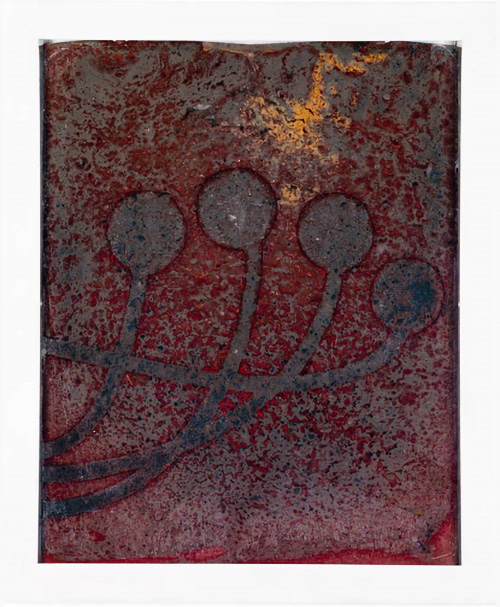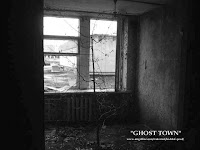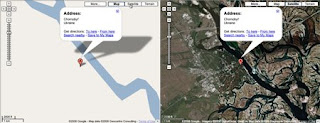
Notes from, Andy Webster & Jon Bird,
Better Living Through Electrochemistry? in Artful Ecologies, University College Falmouth, 2006, pp 121-128.
Image credit: Andy Webster, 51 Aqueous Dispersals, 2006, Viscous Solution & Air, 36”x24”.
Webster and Bird discuss G. Bateson's
The Roots of Ecological Crisis. The basis of all threats to humanity’s survival are technological progress; population increase; and the prevailing values of western culture. In particular, again it is the Western notion of self as independent of environment that is called into question. Shades of Deep Ecology here.
How and what can art do to change people's values? Well, I am skeptical it can do anything apart from change the views of those who care about art. In Australia at least we are in the minority. And to make matters worse, this minority is quite likely already converted. Art might not have any impact here. I can't see art stopping the developing world from desiring to emulate the Western lifestyle either.
Webster and Bird call for
immanent art that allows the materials to find their own form, rather than having form imposed by an artist in a
transcendent art. Imminent art they say has, "the greatest potential to correct people’s view of their relationship with the environment".
To a large extent I feel that any artist is always "discovering" the form of a medium. Whether that be words, sound, the line, plate metal, mud-brick, computation or any other. What the authors seem to be getting at though is a desire to explore natural, physical, chemical or biological (and I add computational!) processes by letting them speak for themselves. Yet the artist must always set up the boundary conditions. I feel strongly that art is a biologically instigated intervention in the world. We can argue about the degree of control the artist maintains, but there must always be some, even if only at the initiation point.
Immanent art exhibits physical, chemical or biological dynamics that act independently of the artist. That is, the art's form is self-determined, possibly for an extended period. Art that clarifies or heightens one's experience of a natural process (like melting ice, flowing tides, cell reproduction) can really be enlightening and I hope to see much more of it, even though I am a reasonably environmentally-aware pessimist with his eyes glued to screens for much of my life :-)
If anything really has the potential to change our view of the self as extending into the realm of what we currently label "the environment" I feel it is most likely architecture. This operates more broadly than art since: all of us, whether we are intellectually interested in it or not, engage directly with it; it is absorbed subconsciously and mediates our experience of the climate and other organisms. A topic for another post.
 ABC News Radio this morning reported that Gunns is having trouble finding financial backers for its proposed pulp mill in Tasmania's Tamar valley, following the withdrawal of the ANZ bank earlier this year. Gunns apparently admitted that the pulp mill might never be built. One can only hope!
ABC News Radio this morning reported that Gunns is having trouble finding financial backers for its proposed pulp mill in Tasmania's Tamar valley, following the withdrawal of the ANZ bank earlier this year. Gunns apparently admitted that the pulp mill might never be built. One can only hope!
